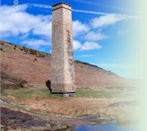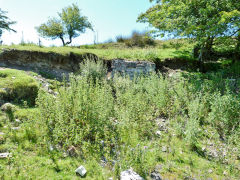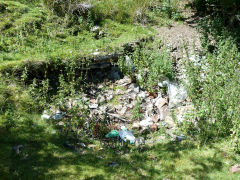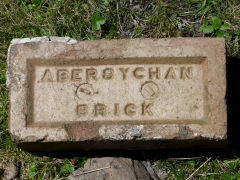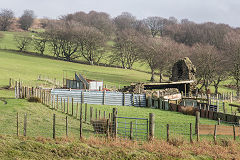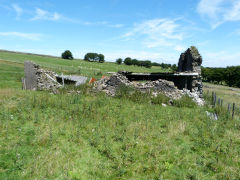The Industrial Archaeology and History of the Eastern Valley
Or click on the button to go to :-
Click on the thumbnail to enlarge a photo or map and sometimes read more about it.
Then click 'Full Size' on the toolbar to see it in all its glory.
Gyspy Lane to Graig Ddu and Pen-rhiw-fid
Graig Ddu Brickworks - SO 2542 0205
Graig Ddu Brickworks was an old-established brickworks, the National Archives have records from 1832 to 1907. It is mentioned in 1858 as the Graigddu Brick Co and around 1895 Edwin Southwood Jones, of the Danygraig brickworks in Risca, took over the operation. In 1947 Llanerch Colliery tip collapsed into the valley cutting off the railway to Blaenserchan washery and by 1962 the brickworks was disused. The clay (and some coal) was obtained from levels and c1950 employed 30 men.
D S M Barrie, the railway author, was a nephew of Edwin Southwood Jones and wrote of his memories of Graig Ddu Brickworks in 1929 :-
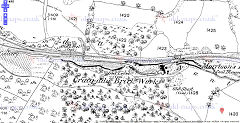
Graig Ddu Brickworks 1880
|
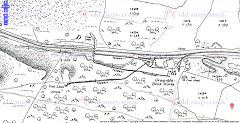
Graig Ddu Brickworks 1920
|
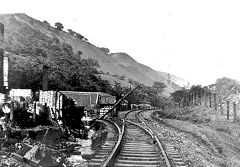
Graig Ddu Brickworks, pre-1947
|
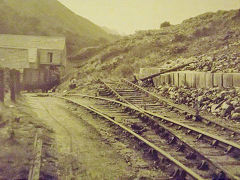
Graig Ddu Brickworks, 1951
|
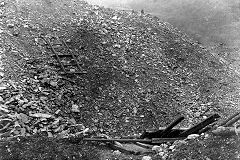
Graig Ddu landslip, 1947
|
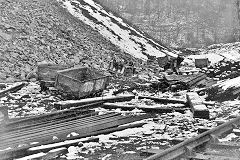
Graig Ddu landslip, 1947
|
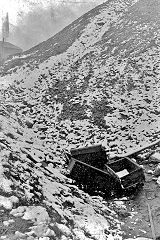
Graig Ddu landslip, 1947
|
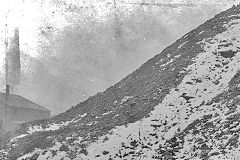
Graig Ddu landslip, 1947
|
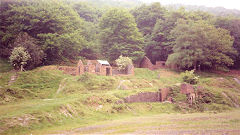
Graig Ddu Brickworks, 1992
|
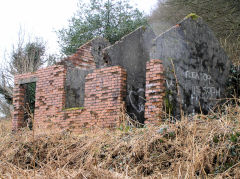
Graig Ddu works Western building
|
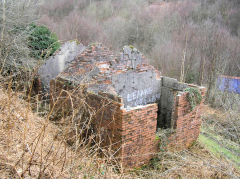
Graig Ddu works Western building
|

Graig Ddu works Eastern building
|
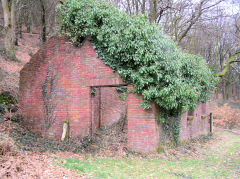
Graig Ddu works Eastern building
|
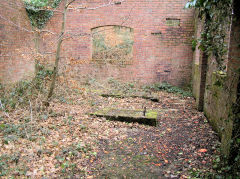
Graig Ddu works Eastern building
|
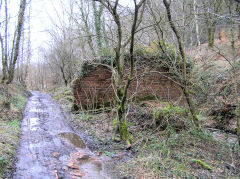
Graig Ddu works Eastern building
|
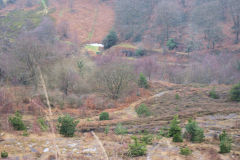
Graig Ddu Brickworks from North
|
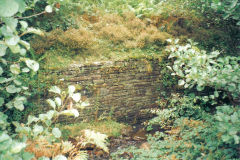
Brickworks GWR branch
|
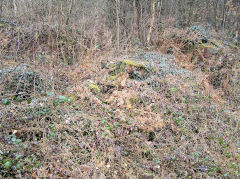
Graig Ddu Brickworks kiln area
|
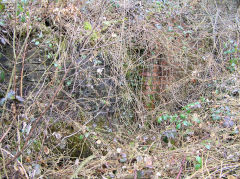
Graig Ddu Brickworks kiln area
|
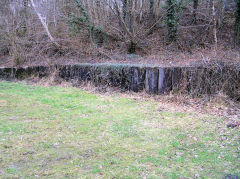
Graig Ddu Brickworks yard
|
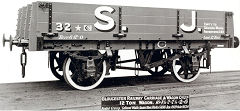
Graig Ddu Brickworks wagon
|
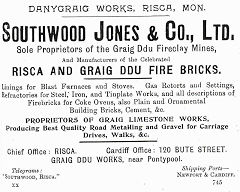
Graig Ddu Brickworks advert
|

'Graigddu British Made'
|
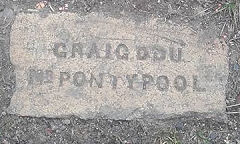
'Graigddu Nr Pontypool'
|
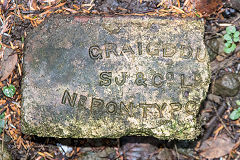
'Graigddu SJ and Co Ld
Nr Pontypool'
|
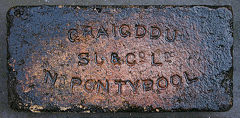
'Graigddu SJ and Co Ld
Nr Pontypool'
|
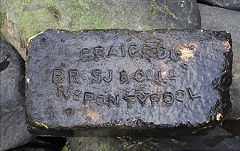
'Graigddu BR SJ and Co Ld
Nr Pontypool'
|
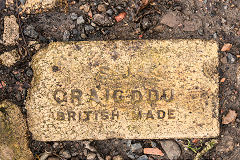
'SJ Graigddu British Made'
|
Pen-rhiw-fid Quarry - SO 2506 0146
Pen-rhiw-fid Quarry is on top of the ridge overlooking Graig Ddu brickworks and the incline led down to the brickworks yard. Perhaps the quarry was a venture of the brickworks.
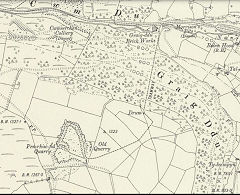
Pen-rhiw-fid Quarry incline, 1899
|
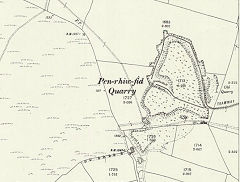
Pen-rhiw-fid Quarry, 1899
|
|
|
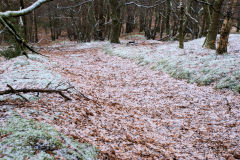
Quarry incline looking down
|
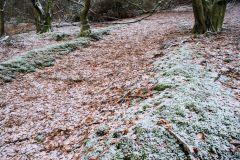
Quarry incline looking up
|
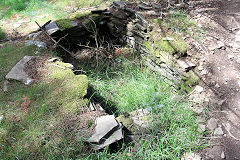
Pen-rhiw-fid Quarry
|

Pen-rhiw-fid Quarry
|
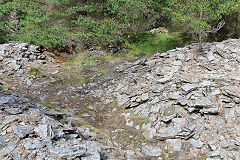
Pen-rhiw-fid Quarry
|
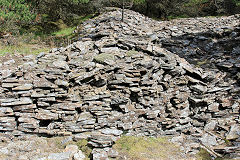
Pen-rhiw-fid Quarry
|
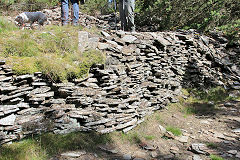
Pen-rhiw-fid Quarry
|
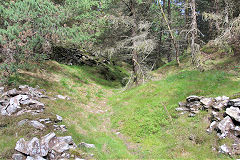
Pen-rhiw-fid Quarry
|
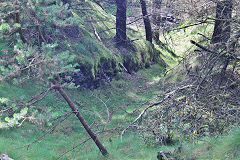
Pen-rhiw-fid Quarry
|
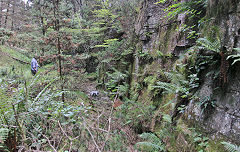
Pen-rhiw-fid Quarry
|
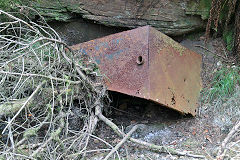
Pen-rhiw-fid Quarry
|
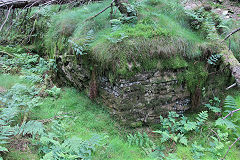
Pen-rhiw-fid Quarry tramway
|
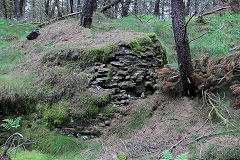
Pen-rhiw-fid Quarry tramway
|
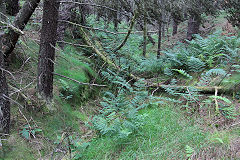
Pen-rhiw-fid Quarry tramway
|

Pen-rhiw-fid Quarry tramway
|
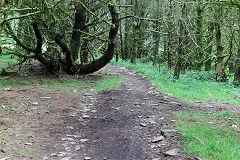
Pen-rhiw-fid Quarry tramway
|
Penrhiwfid Quarry tips and bins - SO 2500 0142
An unusual array of 8 or so bins are on the other side of the lane from the quarry. They appear to have been connected by a tramway but their exact purpose is very unclear.
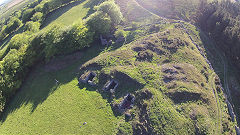
Aerial view of Penrhiwfid Quarry
|
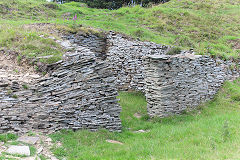
Penrhiwfid Quarry tips and bins
|
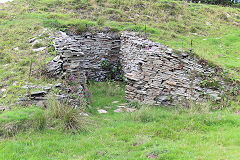
Penrhiwfid Quarry tips and bins
|
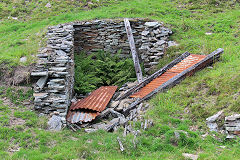
Penrhiwfid Quarry tips and bins
|
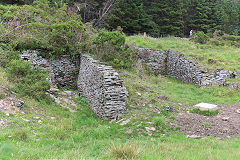
Penrhiwfid Quarry tips and bins
|
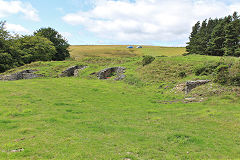
Penrhiwfid Quarry tips and bins
|
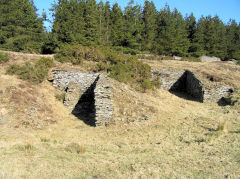
Penrhiwfid Quarry tips and bins
|
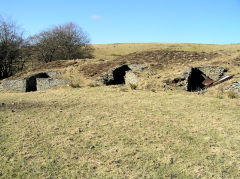
Penrhiwfid Quarry tips and bins
|
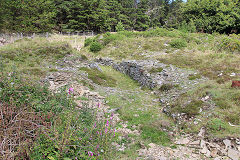
Penrhiwfid Quarry tramway
|
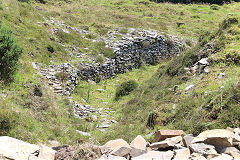
Penrhiwfid Quarry tramway
|
|
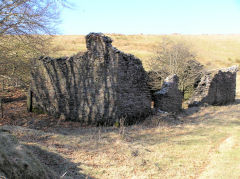
A barn beside the tips and bins
|
Gyspy Lane, The 'Robin Hood' and Morrison's Pit
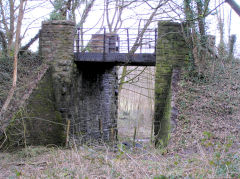
Gypsy Lane bridge over GWR
|
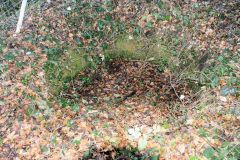
Gypsy Lane shaft
|
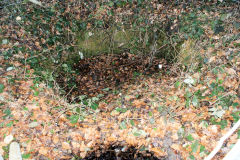
Gypsy Lane shaft
|
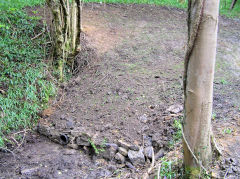
Gypsy Lane drainage level
|
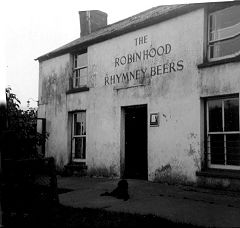
Robin Hood Inn
|
|
|
|
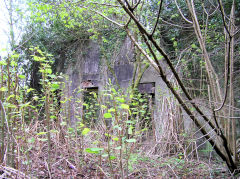
Robin Hood Inn
|
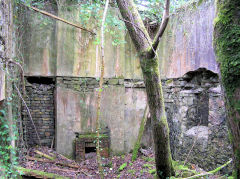
Robin Hood Inn
|
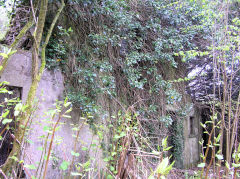
Robin Hood Inn
|
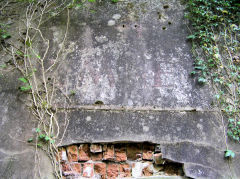
Robin Hood Inn 'Rhymney' sign
|
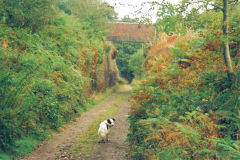
Morrisons Pit GWR Bridge
|
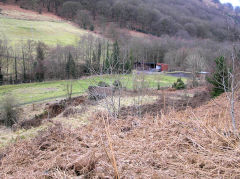
Morrisons Pit
|

Morrisons Pit
|
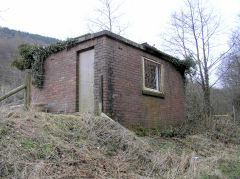
Morrisons Pit building
|
Memories of Graig Ddu Brickworks
D S M Barries memories of Graig Ddu Brickworks
Mr D S Barrie of London, one of our English members, has kindly supplied the following notes on the subject of old tramroads in Wales and Scotland.
There is a tradition in my mothers family that my great-grandfather built several tramways in the early decades of the 19th century, from the valley coalpits of South Wales and Monmouthshire down to the rivers and canals. I was born near Newport, Mon, my grandfather being at one time manager of the Hennlys Colliery above Cwmbran. When he left this job he struck out on his own and bought the Graigyddu claymine near Pontypool and also established brickworks at Risca, Mon, where my mother was born. These two works are still going full-blast and are still owned by my mothers family, my father being in fact connected with them in his business.
The only purpose in reciting this family history is that all these old mines have most interesting little tramway systems. That at Graigyddu is quite extensive and consisted of two sections (1) a main line running back into the hills, underground, for nearly a mile, with various branches and (2) a steep incline about 1 in 10, worked by cables, leading up the mountain through dense wood to an old 'outcrop' gallery which produced quite good coal for about 85 years; the coal is still there but it costs too much to get out.
These two tramways, which are about 2 ft gauge, were both laid about 1830, I believe. The original sleepers were stone setts (as were commonly used at that time) and the rails cast-iron and flat-bottomed. My grandfather ripped the whole lot up when he bought the place, and since then the permanent way seems to have been relaid many times. It now consists of a mixture of various types with light steel rails and sleepers predominating. The coalmine section is of course disused but the cables are still in situ. The claymine branch is worked, to the best of my knowledge, by an old horse, though on the occasion of my last visit I and my uncle (now managing director) 'drove' one of the trains (two trucks loaded with clay weighing about 5 tons) along the underground gallery; the attempt had to be given up when I fell into a trench full of water !
The brickworks or rather one of the three owned by our family, is situated in a narrow, very steep valley which is thickly wooded on both sides. There is a Great Western single-line branch running up the valley to the well-known Tirpentyws Colliery at the top; the steepest gradient on this branch (worked by 0-6-0T standard gauge engines) is 1 in 18, there is a siding from the branch to the brickworks.
About 200 yards below the brickworks buried in the woods is a very interesting old railway relic which dates back over 100 years. This is an old tramway leading to a cable-worked incline to the Tirpentwys pit, and was used for running coal down to the valley before the GWR built their branch. The brick-built arches of an old bridge and a few pieces of old rail dating from about 1845 are still there, while one can trace the path of the track through the woods; the old incline is however, buried under refuse tipped down the side of the hill in more recent times.
